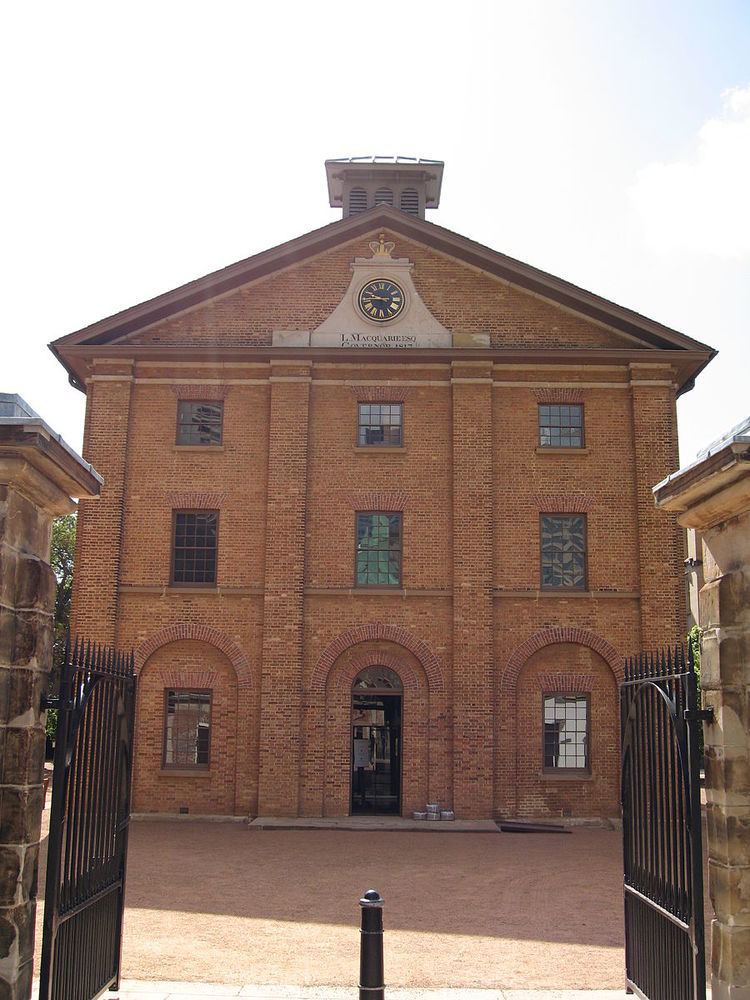 | ||
Australian non-residential architectural styles are a set of Australian architectural styles that apply to buildings used for purposes other than residence and have been around only since the first colonial government buildings of early European settlement of Australia in 1788.
Contents
- Old Colonial Period 1788c 1840
- Victorian period ca 1840c 1890
- Victorian Mannerist
- Victorian Second Empire
- Victorian Renaissance Revival
- Edwardian period ca 1890s1910
- Edwardian Baroque
- Federation Period c 1890c 1915
- Federation Free Classical
- Inter War Period c 1915c 1940
- Federation Functionalist Moderne
- Post War Period c 19401960
- Late Twentieth Century Period 19602000
- Brutalist
- Post Modern
- Deconstructivist
- 21st century architecture
- Structuralist
- Sustainable
- References
Their distribution follows closely the establishment and growth of the different colonies of Australia, in that the earliest colonial buildings can be found in New South Wales and Tasmania.
The following classifications are derived from Apperley, Irving and Reynolds (1989):
Old Colonial Period (1788–c. 1840)
Victorian period (ca. 1840–c. 1890)
15 styles all prefaced by "Victorian":
Georgian, Regency, Egyptian, Academic Classical, Free Classical, Filigree, Mannerist, Second Empire, Italianate, Romanesque, Academic Gothic, Free Gothic, Tudor, Rustic Gothic, Carpenter GothicVictorian Mannerist
Notable examples in Australia include: Culwulla Chambers (Sydney); Former Rocks Police Station (Sydney); Block Arcade (Melbourne); Stalbridge Chambers (Melbourne), National Bank Pall Mall (Bendigo); RESI Chambers (Melbourne); Lygon Buildings, Medley Hall (Carlton, Victoria); Former Money Order Post Office and Savings Bank (Melbourne); Mutual Store (Melbourne);
Victorian Second Empire
Notable examples include: Sydney Town Hall (Sydney); Hotel Windsor (Melbourne); Princess Theatre (Melbourne); Former Records Office (Melbourne); Melbourne General Post Office (Melbourne); Melbourne Town Hall (Melbourne); East Melbourne Synagogue (East Melbourne, Victoria); Royal Exhibition Building (Carlton, Victoria); Collingwood Town Hall (Collingwood, Victoria); South Melbourne Town Hall (South Melbourne, Victoria); Malvern Town Hall (Malvern, Victoria); Former Rechabite Hall (Prahran, Victoria); Brunswick Town Hall (Brunswick, Victoria); Camberwell Town Hall (Camberwell, Victoria); Bendigo Town Hall (Bendigo, Victoria); Shamrock Hotel (Bendigo Victoria); Bendigo Courthouse (Bendigo, Victoria); Bendigo Post Office (Bendigo, Victoria); Institute of Technology (Bendigo, Victoria); Queensland Parliament House (Brisbane)
Victorian Renaissance Revival
Notable examples include the NSW Department of Lands building, constructed between 1876 and 1892.
Edwardian period (ca. 1890s–1910
Edwardian architecture is generally less ornate than high or late Victorian architecture, apart from a subset - used for major buildings - known as Edwardian Baroque architecture.
Edwardian Baroque
Notable examples include the Lands Administration Building in Brisbane, the Queen Victoria Hospital, Melbourne (main pavilion, now Queen Victoria Women's Centre), the Commonwealth Offices, Treasury Place, Melbourne, the Central railway station in Sydney, the Department of Education building in Sydney (1912) and the General Post Office in Hobart.
Federation Period (c. 1890–c. 1915)
12 styles, each style name prefaced by "Federation":
Academic Classical, Free Classical, Filigree, Anglo-Dutch, Romanesque, Gothic, Carpenter Gothic, Warehouse, Queen Anne, Free Style, Arts and Crafts, BungalowFederation Free Classical
Notable examples include: Sydney Hospital (Sydney); Taronga Zoo Pavilion (Sydney); Sydney Central Station (Sydney); Flinders Street Station (Melbourne); Sacred Heart Church (St Kilda, Victoria); Read's Emporium (Prahran, Victoria); Old Royal Hotel (Williamstown, Victoria); Former Queensland Lands Administration Building (Brisbane)
Inter-War Period (c. 1915–c. 1940)
16 styles, each style name prefaced by "Inter-War":
Georgian Revival, Academic Classical, Free Classical, Beaux-Arts, Stripped Classical, Commercial Palazzo, Mediterranean, Spanish Mission, Chicagoesque, Functionalist & Modern, Art-Deco, Skyscraper Gothic, Romanesque, Interwar Gothic, Old English, California BungalowFederation Functionalist & Moderne
The functionist and moderne style often used combinations of blonde and brown bricks in linear vertical or horizontal patterns. Notable examples include: Museum of Contemporary Art (Sydney); Captain's Flat Hotel (NSW); Russell Street Police Headquarters (Melbourne); Astor Theatre (St Kilda, Victoria); Ballarat Law Courts (Ballarat);
Post-War Period (c. 1940–1960)
5 styles, each style name prefaced by "Post-War":
Ecclesiastical, International, ModernLate Twentieth-Century Period 1960–2000
14 styles, each style name prefaced by "Late Twentieth Century":
Stripped Classical, Ecclesiastical, International, Organic, Brutalist, Structuralist, Late Modern, Post Modern, Immigrants' NostalgicBrutalist
Notable examples include: Sydney Masonic Centre/Civic Tower (Sydney); AAPT Centre (Sydney); Sydney Law School (Sydney); Cameron Offices (Canberra); High Court of Australia (Canberra); State Library of Queensland (Brisbane); Queensland Performing Arts Centre (Brisbane); Law Courts (Brisbane); Suncorp Metway Plaza (Brisbane); National Gallery of Victoria (Melbourne); Total carpark (Melbourne); World Trade Center (Melbourne); Harold Holt Memorial Swimming Pool (Malvern, Victoria); St Kilda Public Library (St Kilda, Victoria); Plumbing Trades Employees Union of Australia Building (Melbourne); University of Melbourne Faculty of Engineering (Melbourne); Metropolitan Fire Brigade (East Melbourne, Victoria); R.A.W. Woodgate Centre (Kew, Victoria); UTS Tower (University of Technology, Sydney); St Anthony's Church (Marsfield, Sydney). See Category:Brutalist architecture in Australia.
Post Modern
A subset of postmodernism is mock-historicism tries to imitate historic styles using modern materials to the point where it is difficult to tell them apart from historic buildings. The most imitated styles are those that are easiest to clone (including the Georgian style).
Deconstructivist
Notable examples include Green Building RMIT; Deakin University main building; Australian Centre for Contemporary Art; Gottlieb House (Melbourne)
21st-century architecture
Several new and continued 20th-century styles, all prefaced with "21st-century" - Deconstructivist, Post modern, Structuralist, Sustainable, Modern
Deconstructivist
Notable examples include Fed Square; Shrine of Remembrance crypt; Sofo House (Melbourne) Swan Bells (Perth)
Structuralist
Advanced structuralism facilitated by Computer Aided Design
Sustainable
Notable examples in Australia include: 60L (Melbourne); CH2 (Melbourne); K2 Apartments (Windsor, Victoria); Dunc Gray Velodrome (Sydney); Forest EcoCentre (Tasmania); Rozak House (Noonamah, Northern Territory).
